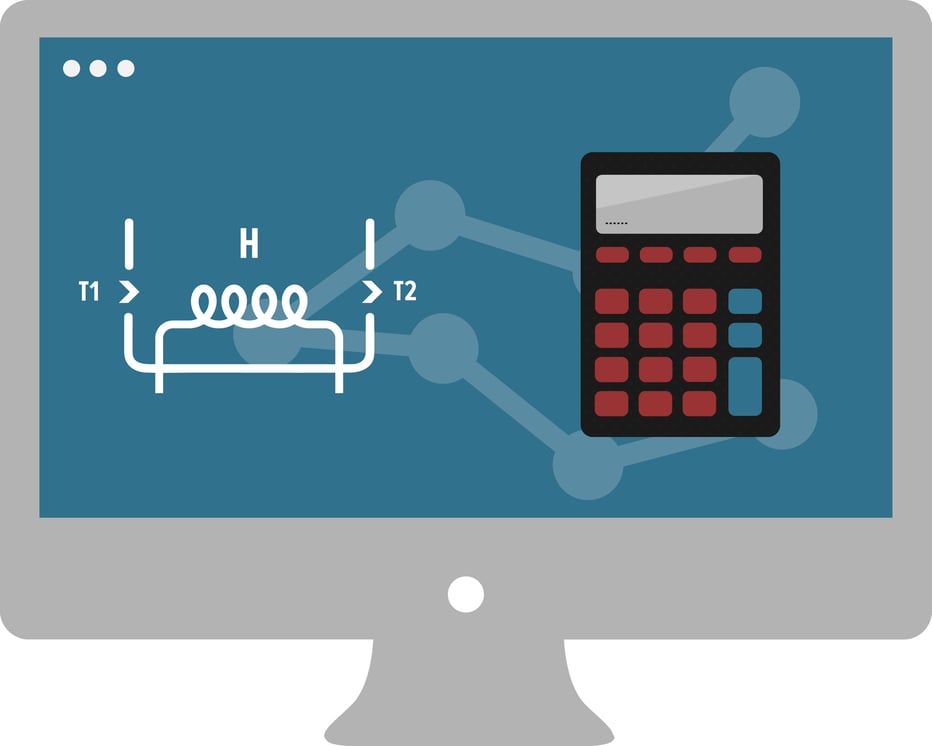Forced-air cooling is advantageous in a number of different scenarios. For example, forced-air cooling of electronic components in an industrial setting is significantly more efficient than convection cooling, as it reduces air temperature in the general vicinity of the components being cooled and improves the heat transfer coefficient.
This, in turn, maximizes the system’s performance and improves its lifespan. However, in order for forced-air cooling to be effective it must be based on an accurate measure of the total cooling requirements, including the targeted cooling rate.
Targeted Cooling Rate Equation
The targeted cooling rate is the airflow required to achieve the targeted cooling rate for an application. There are two slightly different equations, depending on whether you want to measure airflow in cubic feet per minute (CFM), cubic meter per hour (m3/h), or cubic meter per minute (m3/min). The equations are:
In CFM — Q = [(H)/(T2-T1)]*3.16
In m3/h — Q = [(H)/(T2-T1)]*3.16*1.699011
In m3/min — Q = [[(H)/(T2-T1)]*3.16*1.699011]/60
In the equation, the value 3.16 is the Standard Air Conditions, a constant value; 1.699011 is the standard m3/h value, also a constant. The remaining variables in the equations are defined as follows:
T1 — temperature of air entering system (ºF)
T2 — temperature of air exiting system (ºF)
H — heat load to be dissipated (W)
Q — airflow required for targeted cooling rate
Using either of these equations, an engineer can determine the airflow required to achieve their targeted cooling rate, allowing them to select the correct model fan for the application. It is important to note that this calculation assumes other standard air conditions (air density at 70 ºF at 29.92”hg) at sea level.
Pelonis Targeted Cooling Rate Calculator
Any engineer, especially those who routinely design components with cooling fans, will be very familiar with these equations. They are, however, very time consuming to compute and no one is exempt from the occasional human error.
Our Targeted Cooling Rate Calculator allows engineers to easily determine the airflow required to achieve their targeted cooling rate. In other words, it allows them to figure out how much airflow is needed to dissipate a given amount of heat from a system. The T1, T2, and H values are input by the user, and the calculator provides Q, the airflow required to achieve the desired cooling rate. Calculations are quicker, and result in more accurate and reliable figures.
For example, let’s say that an engineer aims to keep the air within a space at exactly 70 degrees Fahrenheit. If the engineer knows:
- That the temperature of the incoming air is 80 degrees Fahrenheit; and
- That the wattage needed to dissipate the air from the system in order to hit that maximum target of 80 degrees;then the targeted cooling rate calculator allows the engineer to easily ascertain what the airflow needs to be in order to achieve that maximum allowable 10 degree increase. The engineer is then able to choose a fan based on the airflow it can achieve, thus maximizing efficiency.
Additional Pelonis Resources
The bottom line is that our Targeted Cooling Rate Calculator is the quick and easy method engineers need to determine the airflow that is required in order to achieve the targeted cooling rate for their projects.
At Pelonis Technologies, we’re here to make your life easier. That’s why we’ve put all of the resources you need, including the targeted cooling rate calculator, in one convenient place. We’re always rolling out more calculators to help you maximize efficiency.
Try the Targeted Cooling Rate Calculator today, and then contact us to discuss the fan models that will help you meet your cooling rate.




